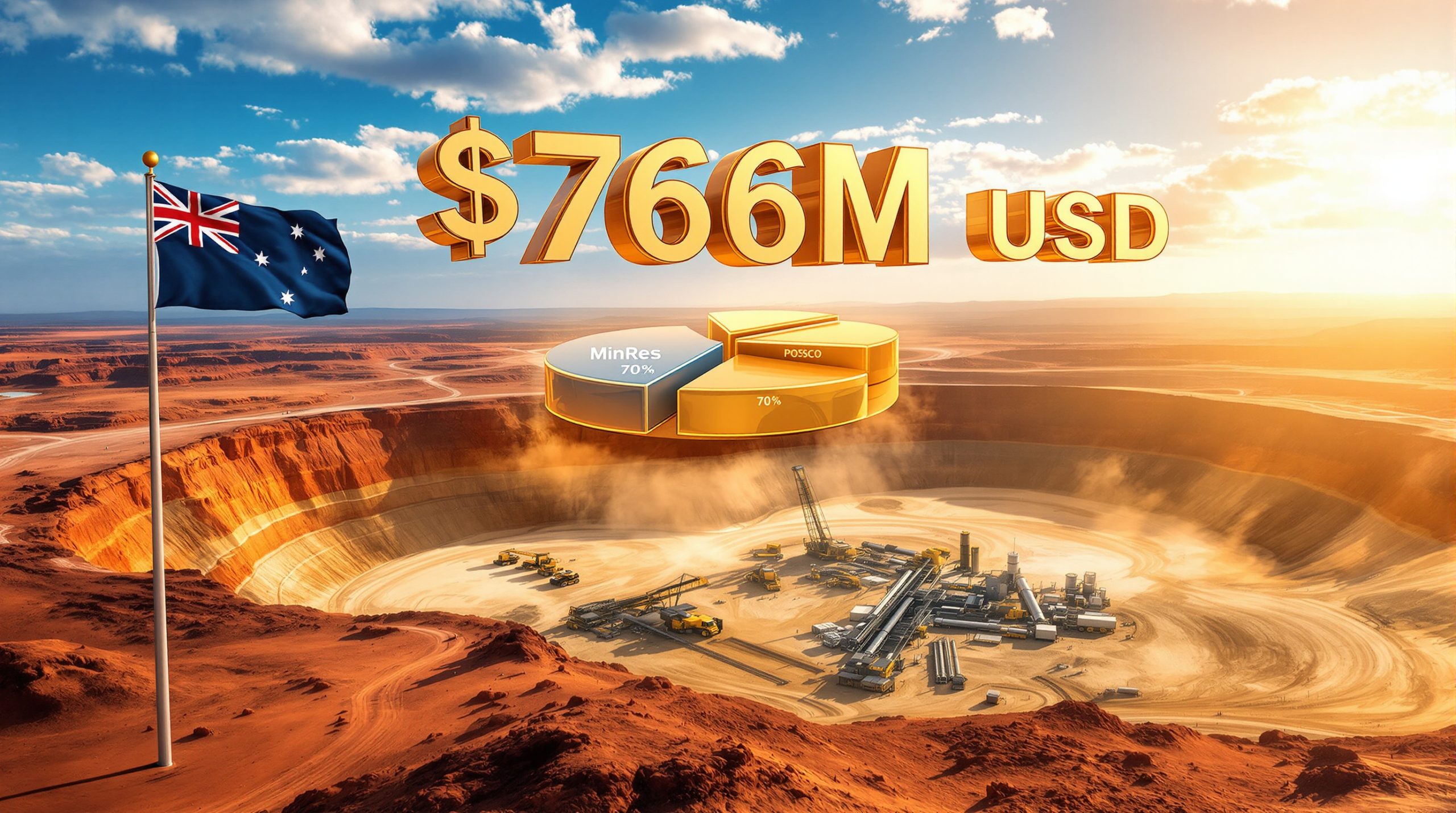Why Australia's Critical Minerals Partnership with the US Has Become Essential
The convergence of global supply chain vulnerabilities and escalating geopolitical tensions has positioned Australia's critical minerals sector at the center of Western strategic planning. Recent developments, particularly China's tightening grip on rare earth exports in October 2025, have created an unprecedented opportunity for Australia-US collaboration in securing essential materials for modern technology and defence applications.
The timing of Anthony Albanese's meeting with Donald Trump on critical minerals could hardly be more strategic, occurring just over a week after Beijing's latest restrictions on critical mineral exports. This development has exposed Western economies' dangerous dependence on a single supplier and created urgent momentum for alternative supply arrangements.
What Makes Anthony Albanese's Meeting with Donald Trump So Strategically Important
The Perfect Storm of Timing
The October 20, 2025 diplomatic engagement represents a pivotal moment in global supply chain realignment. China's recent decision to tighten its already substantial control over rare earth elements has sent shockwaves through Western capitals, making the meeting between the Australian Prime Minister and US President particularly consequential.
According to national affairs correspondent Jane Norman, the timing for Albanese could hardly be better, with China's restrictions occurring just over a week before this crucial meeting. This development has transformed what might have been routine diplomatic talks into urgent strategic negotiations.
The meeting marks Albanese's first formal Oval Office sit-down with Trump, despite four phone calls since Trump's re-election in November 2024 and a brief encounter on the UN General Assembly sidelines in September 2025. Originally scheduled for June 2025, the meeting was postponed when Trump departed the G7 Summit in Canada early to address Middle Eastern developments.
Beyond Raw Materials: The Value-Add Challenge
Australia's strategic position extends far beyond its abundant mineral reserves. The nation faces a critical infrastructure gap: while it dominates mineral extraction, it lacks the processing capabilities that could transform global supply dynamics. Furthermore, mineral beneficiation opportunities highlight how Australia can extract critical minerals from the ground but requires substantial capital investment for the crucial next step of processing these materials to challenge China's near-total sector dominance.
This processing gap represents both vulnerability and opportunity. According to well-placed sources, Beijing's market manipulation has made traditional competitive dynamics "unplayable," creating a situation that Western governments must now address through substantial financial intervention.
How Australia Could Transform Global Critical Minerals Supply Chains
Australia's Strategic Mineral Position
Australia's geological advantages position it as a potential cornerstone of Western supply chain security. The nation possesses significant reserves of lithium, cobalt, rare earth elements, and other materials essential for modern technology applications. However, the critical challenge lies not in extraction capabilities but in developing midstream processing infrastructure.
| Capability | Current Status | Strategic Importance |
|---|---|---|
| Mineral Extraction | World-leading capacity | Foundation of supply chain |
| Initial Processing | Limited infrastructure | Critical bottleneck |
| Refined Products | Minimal capability | Maximum value creation |
| Component Manufacturing | Nascent industry | Final strategic goal |
Processing Infrastructure Requirements
The transformation from raw material supplier to strategic partner requires substantial infrastructure development:
- Specialised refining facilities capable of producing battery-grade materials
- Advanced waste management systems meeting international environmental standards
- Technical expertise transfer from established processing centres
- Integrated logistics networks connecting extraction sites to processing facilities
- Skilled workforce development programmes for high-tech manufacturing
What Investment Mechanisms Are Being Proposed
The $1.2 Billion Strategic Reserve Initiative
Australia has developed proposals centred around a $1.2 billion critical minerals stockpile designed to provide market stability and supply security. This initiative extends beyond simple inventory management to create a comprehensive strategic buffer involving sophisticated market mechanisms.
The stockpile structure incorporates several key components:
- Offtake agreements providing long-term supply contract guarantees
- Floor pricing mechanisms creating investment certainty for emerging projects
- Supply chain diversification reducing single-point-of-failure vulnerabilities
Bilateral Investment Options
Two primary investment pathways have emerged from recent diplomatic discussions:
- Direct US Investment: The Trump administration could invest directly in Australia's critical minerals reserve, providing immediate capital for infrastructure development
- Reciprocal Financing: Cross-border financing arrangements where the US finances Australian projects while Australia provides similar support for American initiatives
These mechanisms aim to share financial risk between governments while accelerating development timelines for strategically important projects.
How This Partnership Addresses US National Security Concerns
AUKUS Submarine Programme Integration
The critical minerals partnership intersects directly with the $368 billion AUKUS submarine agreement. Australia faces a $1 billion payment deadline to the US by the end of 2025, while the Pentagon continues reviewing the agreement for Australia to acquire eight nuclear-powered submarines.
Former Ambassador Arthur Sinodinos emphasised the importance of securing Trump's personal commitment to AUKUS, noting that establishing leader-level rapport could significantly influence ongoing Pentagon assessments. The submarine programme includes $12 billion for Henderson shipyard development in Western Australia, providing US Virginia-class submarines with Pacific access capabilities.
Defence Technology Dependencies
Modern military systems require consistent access to specialised materials for critical applications:
Essential Defence Components:
Advanced radar systems utilising rare earth magnets for precision targeting
Communication equipment powered by lithium-ion battery systems
Missile guidance systems incorporating cobalt-based electronic components
Precision-guided munitions requiring specialised magnetic materials
Defence Spending Pressures
The partnership occurs against backdrop of increasing US pressure for allied defence spending increases. In addition, critical minerals energy security considerations have become paramount as Trump has called for 3.5 percent of GDP allocation, with Secretary of Defence Pete Hegseth suggesting requirements up to 5 percent. Australia currently maintains 2 percent GDP defence spending, arguing that absolute investment amounts rather than percentage metrics better measure commitment.
Why Midstream Processing Represents the Strategic Key
Value Creation Analysis
The transformation from raw material extraction to processed products offers substantial value multiplication opportunities, though specific multipliers require verification from industry sources. Processing capabilities create exponentially higher economic returns compared to raw material exports.
Current global processing dynamics reveal significant imbalances:
| Processing Stage | Australian Capacity | Global Leadership |
|---|---|---|
| Raw ore extraction | Dominant position | Australia leads |
| Initial refining | Limited capacity | China controls |
| Battery-grade production | Minimal capability | China dominates |
| Component manufacturing | Nascent industry | Asia-Pacific focus |
Infrastructure Investment Imperatives
Developing competitive processing capabilities requires coordinated investment across multiple areas:
- Technical Infrastructure: Specialised facilities for rare earth separation and purification
- Environmental Systems: Advanced waste management meeting stringent environmental standards
- Workforce Development: Training programmes for specialised processing techniques
- Research Capabilities: Innovation centres for processing technology advancement
- Supply Chain Integration: Logistics networks connecting mines to processing centres and export terminals
Expected Economic and Strategic Outcomes
Employment Generation Potential
Industry projections suggest the partnership could generate substantial employment opportunities, though specific figures require verification from government economic assessments. For instance, the mining industry evolution traditionally creates significant multiplier effects through direct mining employment, processing facility operations, and supporting service industries.
Regional development in mineral-rich areas could benefit from:
- Direct employment in extraction and processing operations
- Indirect employment in transportation, maintenance, and support services
- Induced employment through increased economic activity in mining communities
Export Revenue Transformation
Transitioning from raw material exports to processed products could dramatically increase export values, though specific percentage increases require verification from trade statistics. The value addition from processing represents one of the most significant opportunities for economic transformation in the critical minerals sector.
Challenges That Must Be Overcome
Market Competition Dynamics
The partnership faces substantial competitive challenges from established players. However, US-China trade tensions have created what sources describe as an "unplayable" competitive environment, where traditional market mechanisms no longer function effectively.
Key competitive barriers include:
- Price Competition: Chinese subsidised production creating artificially low market prices
- Established Relationships: Existing supply contracts between Chinese processors and global manufacturers
- Technical Expertise: China's accumulated knowledge in rare earth processing technologies
- Scale Economics: Massive Chinese processing capacity creating cost advantages
Technical and Regulatory Barriers
Successful partnership implementation requires addressing several complex challenges:
- Processing Technology Gaps: Australia lacks sophisticated separation and purification technologies
- Environmental Compliance: Processing operations must meet stringent environmental standards in both countries
- Skilled Workforce: Limited availability of specialised technical expertise for processing operations
- Capital Intensity: Processing infrastructure requires substantial upfront investment with long payback periods
What Success Looks Like for Both Nations
Australian Strategic Benefits
Success would position Australia as an indispensable strategic partner rather than merely a commodity supplier. The transformation involves developing industrial capabilities beyond traditional mining operations, creating value-added manufacturing sectors, and establishing Australia as a reliable alternative to Chinese supply chains.
As Treasurer Jim Chalmers noted in Washington, American companies desperately need critical minerals, and Australia is uniquely positioned to service that requirement. This represents a fundamental shift from Australia's traditional role as raw material exporter to strategic technology partner.
US Strategic Gains
For the United States, partnership success would reduce dangerous dependencies on adversarial suppliers while strengthening alliance relationships with trusted democratic partners. Charles Edel from the Centre for Strategic and International Studies highlighted Australia's geographic proximity to America's greatest strategic threats as a crucial advantage.
The partnership could provide:
- Supply Chain Resilience: Reduced vulnerability to geopolitical manipulation of essential materials
- Industrial Base Strengthening: Reliable access to materials supporting advanced manufacturing
- Alliance Deepening: Enhanced strategic cooperation with a geographically positioned democratic ally
International Partnership Comparisons
European Union Initiatives
The European Union has pursued similar supply chain diversification strategies through various critical raw materials initiatives, creating competitive dynamics for Australian resources between major Western economies. These parallel efforts suggest global recognition of supply chain vulnerability issues.
North American Frameworks
Existing Canada-US critical minerals collaboration provides templates for bilateral cooperation, though Australia's geological advantages and strategic Pacific location offer unique opportunities not available in North American partnerships.
The Strategic Imperative Moving Forward
The Australia-US critical minerals partnership represents more than bilateral trade arrangements. As former Ambassador Joe Hockey emphasised, this requires substantive wins for Americans rather than symbolic gestures. Consequently, Trump's transactional approach demands concrete benefits that strengthen American strategic positions.
Hockey's advice regarding diplomatic approach proves particularly relevant: Trump respects strength and humour while requiring neither fawning nor adversarial behaviour. The historical alliance depth, with Australia and the United States standing together in major conflicts for over a century, provides foundation for expanded strategic cooperation.
The partnership's success depends on sustained political commitment across multiple election cycles, substantial private sector capital investment, and technological innovation bridging current processing capabilities gaps. This collaboration could establish new models for strategic resource partnerships among democratic allies, potentially expanding to include other nations seeking supply chain security in an increasingly fragmented global economy.
Success would fundamentally restructure global supply chains toward democratic resilience, reducing dependencies on authoritarian suppliers while strengthening alliance relationships among trusted partners. The timing of Anthony Albanese's meeting with Donald Trump on critical minerals represents a pivotal moment in this strategic realignment, with implications extending far beyond bilateral trade relationships.
Ready to Capitalise on Australia's Critical Minerals Boom?
The strategic partnership between Australia and the US is poised to reshape global supply chains and create substantial opportunities in the critical minerals sector. Discovery Alert's proprietary Discovery IQ model delivers real-time alerts on significant ASX mineral discoveries, helping subscribers identify actionable opportunities in companies positioned to benefit from this historic collaboration before the broader market catches on.




